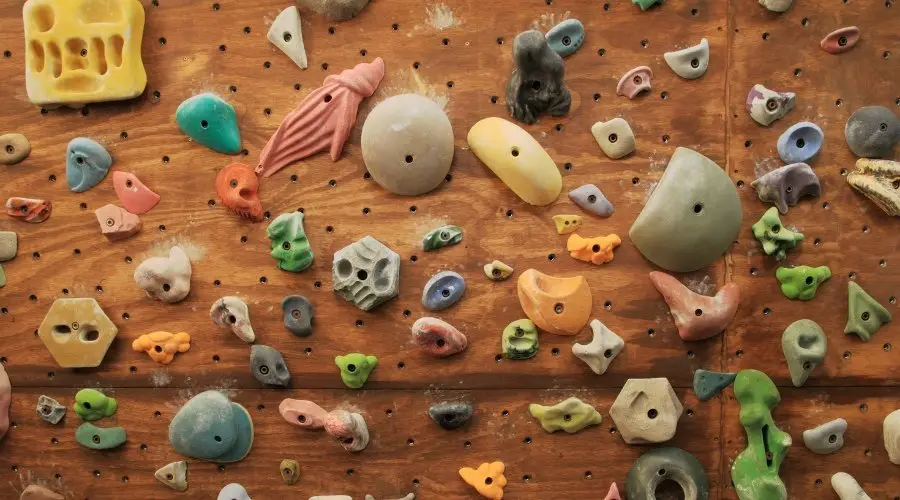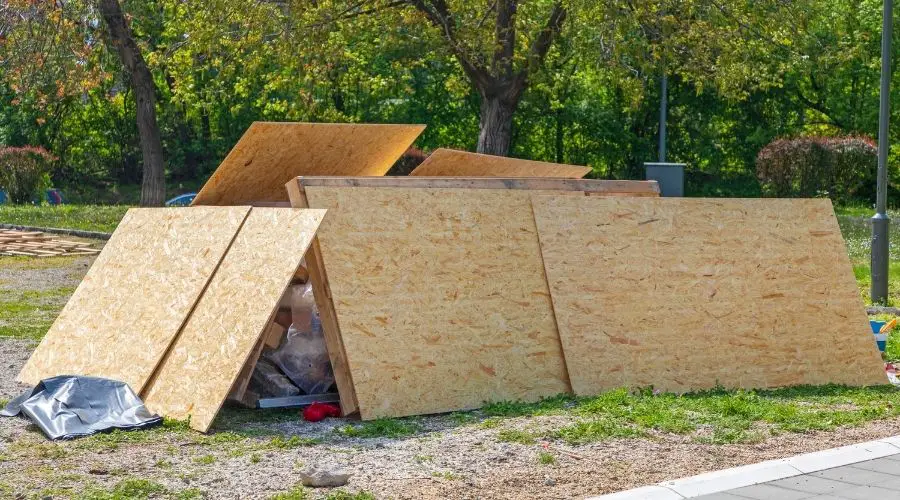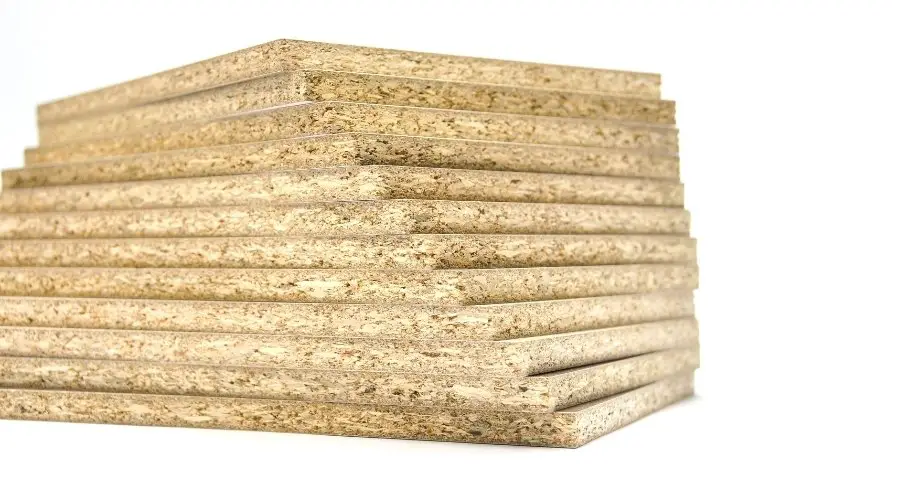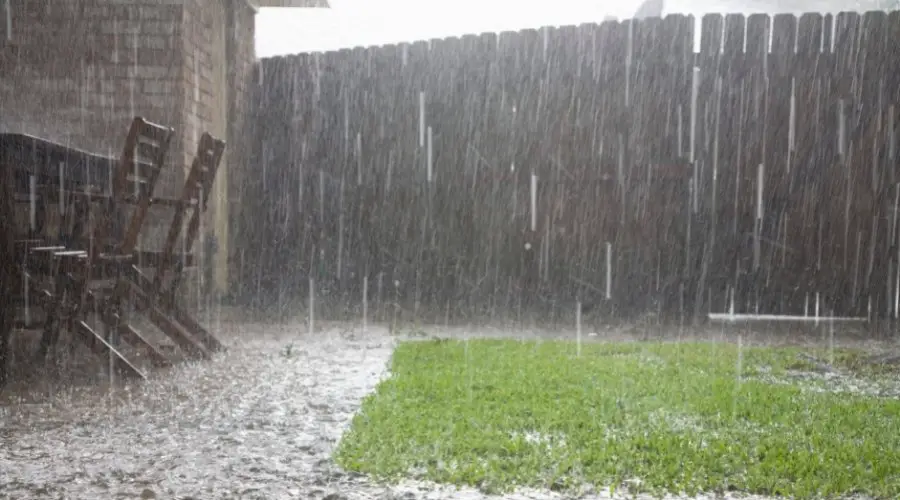Building a home climbing wall is a huge undertaking, especially when you do not have a background in woodworking. One of the first steps in the construction process is choosing what material to build your climbing wall out of. The most common and easiest material to handle is wood. But what is the best type of wood for it?
As a general rule, the best type of wood to use for a home climbing wall is treated plywood. Treated plywood is relatively light and provides the necessary strength, stiffness, and durability required for both indoor and outdoor climbing walls.
Make no mistake, choosing the right wood is integral in the process of building your home climbing wall. Picking the wrong wood could make the entire project a dangerous disaster. You need to be confident that the wall you build will be able to perform in the way you need it to and not worry about it failing on you or your family. This article discuss the key points to consider when picking out the right wood for you climbing wall.
If you haven’t gotten holds for your home wall yet, you can check the current prices of the most popular sets on Amazon here! (affiliate link)
Usability of Wood Types For a Home Climbing Wall

Throughout my research on wall construction (in which I read countless articles, joined facebook groups, and watched youtube videos) I found a few different wood materials that were frequently discussed. So to try and keep things simple, I compiled these materials in table format and stated if the material is feasible to use for a climbing wall:
| Wood Type | Usable for an Indoor Climbing Wall? | Usable for an Outdoor Climbing Wall? |
| Treated Plywood | Yes – Recommended | Yes – Recommended |
| Untreated Plywood | Yes | Yes – Not Recommended |
| Oriented Strand Board (OSB) | Yes – Not Recommended | Yes – Definitely Not Recommended |
| Medium-Density Fiberboard (MDF) | No | No |
| Particle Board | No | No |
You may have noticed that some of the usability evaluations came with “Recommended” or “Not Recommended” attached with them. Wether the wood was recommended for use or not is discussed in further detail in the following sections. This recommendation is based on wood characteristics and its likely performance as a climbing wall.
It should be noted that the table above discusses the wood material for the wall itself. The framing for the climbing needs should NOT be constructed from plywood. The framing needs to be actual lumber/timber. Plywood will not provide the necessary support as a climbing wall frame material and your project will come to a swift end.
Evaluating Different Woods Based On Climbing Wall Criteria
When looking at what wood to choose for a climbing wall, we have to consider what it needs to do. Determining how it needs to perform will give us a clue as to what characteristics the wood needs to have.

Climbing walls need to be strong enough to hold the climber without splitting, keep the holds from pulling out of it, stiff enough that the wall won’t sag too much when the climber is on it, and durable enough to handle any moisture or weather conditions it will be subjected to.
These criteria for a climbing wall lead us to look for wood that is strong, stiff, and durable.
Wood Strength
As mentioned above, the climbing wall will need to be strong enough to hold the weight of the climber and keep the holds from pulling out. This is where our first two wood types get eliminated.
Particle board and MDF are not strong enough to fulfill these needs. Either the holds will pull through them or the board themselves would break once loaded by the climbers weight. Using these materials for your home wall is a great way to completely waste your time and money.

According to the publication titled “Choosing Between Oriented Strandboard and Plywood” written by Paul Fisette in 2005 that is published on the University of Massachusetts Amherst Building and Construction Technology webpage (linked here), OSB and plywood have similar strength.
Both OSB and plywood will be able to meet the necessary strength criteria needed for the wall.
Wood Stiffness
As with the strength criteria, both OSB and plywood will be stiff enough for a climbing wall. According to the UMASS article linked above, OSB is 7% less stiff than plywood but is more uniform. Although plywood is stiffer overall, it will have less stiff points where wood knots occur.
In the grand scheme of things, the difference between the stiffness of the two is not a huge concern as both will get the job done.
Wood Durability
This is where things get interesting in my opinion and where treated plywood becomes the hands down favorite material. All wood products will absorb moisture and expand when subjected to wet environments. It is fair to say that some handle this moisture better than others.

Treated plywood is the most weather resistant (though not waterproof) of the three and will be able to handle moisture and weather conditions the best. It will hold up the best against humidity and maintain its integrity the longest.
Untreated plywood will perform well if kept indoors and dry. It will not hold up as well to moisture and will suffer from rot a lot quicker than treated plywood. If you are thinking about building a climbing wall in your house this should be fine; however, improper humidity can cause damage to the wood. Treated plywood is the safer bet.
OSB handles moisture the worst of the three options. According to the UMASS article linked above, OSB suffers from irreversible water damage to its edges when it gets wet and is more likely to rot because it takes so long for it to dry out.
To place climbing holds on the wall it will have to be drilled through. All of these drill holes for the holds will create edges in the OSB. If the wall gets wet or is subjected to humidity, these edges could become ruined and your holds will pull out of the wall.
If you are fully set on using OSB to save some money, just know that moisture and improper humidity can be very detrimental to it. Using treated plywood will ensure that you wall lasts for the long haul.
The Bottom Line
Although treated plywood seems expensive, I believe it to be well worth the money considering the alternatives. Treated plywood will last the longest and perform the best due to its strength, stiffness and durability.
Untreated plywood and OSB are good options for indoor climbing walls but will not stand up to weather conditions if it were to be moved outdoors or subject to wet environments. Never use particle board or MDF for your climbing wall unless you want it to break and be a total waste of time.

